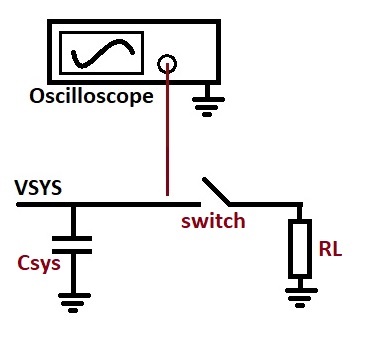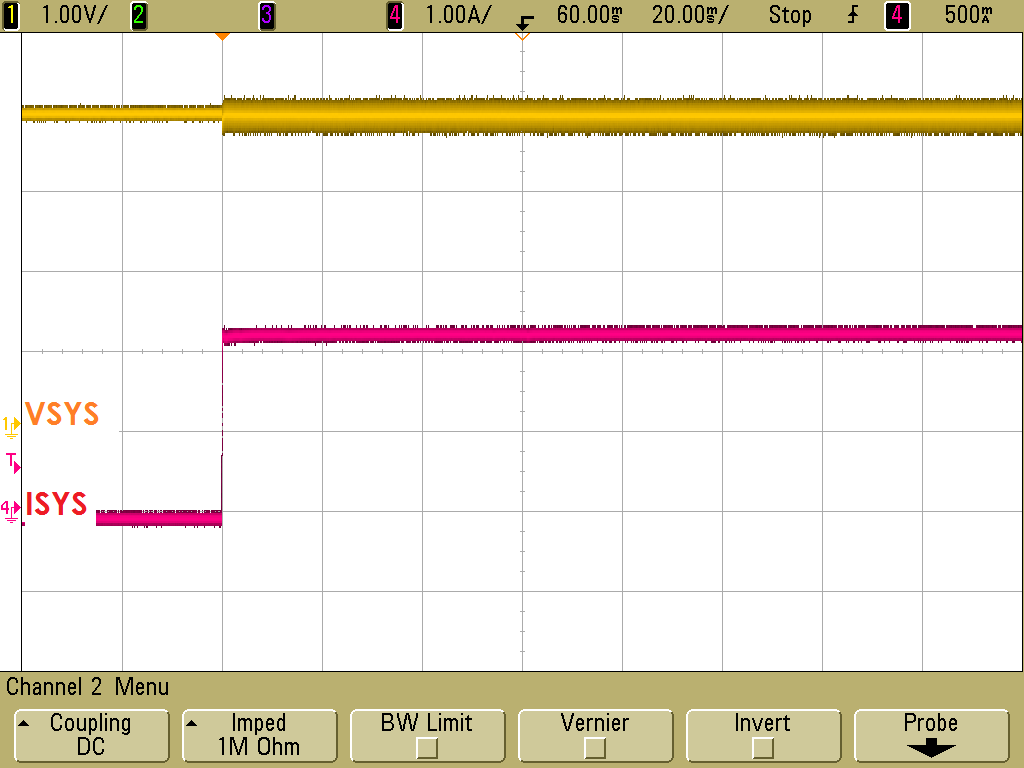Other Parts Discussed in Thread: TPS54240
After a lot of tests and efforts with BQ25601 I have concluded that the chip is not able to respond instantly to load steps when it is in suspend mode.
Below I describe two cases, when battery is present and not.
Battery not present.
If battery is not present and charger is enabled (CE\ Low), it is not capable to provide current to heavy loads without significant droop on VSYS rail.
In the same case, if charger is disabled, it's responded perfectly to step loads. The voltage droop on VSYS is negligible.
Battery present
In the contrast, If the battery is connected irrespective of its voltage level (even with fully discharged battery Vbat < 2.7V) and CE\ status, there's not droop on VSYS rail for the same loads, at all.
In this case, CE\ does not matter. Either LOW or HIGH, transient response to load steps is perfect.
Test conditions and settings.
With host:
VIN = 5V, 2.5A (TPS54240)
IIDPM = 3A
VINDPM = 4.5V (default)
ICHG = 300mA
PRECH = 60mA
ITERM = 60mA
VSYS_min = 3.7V
Csys = 2x10uF + 3x47uF
RL = 2 Ohm
Watchdog disabled
Without host, standalone:
VIN = 5V, 2.5A (TPS54240)
PSEL = LOW (2.4A)
Csys = 2x10uF + 3x47uF
RL = 2 Ohm
Any advice would be appreciated.
Did I do something wrong here?
I upload a diagram of my setup



